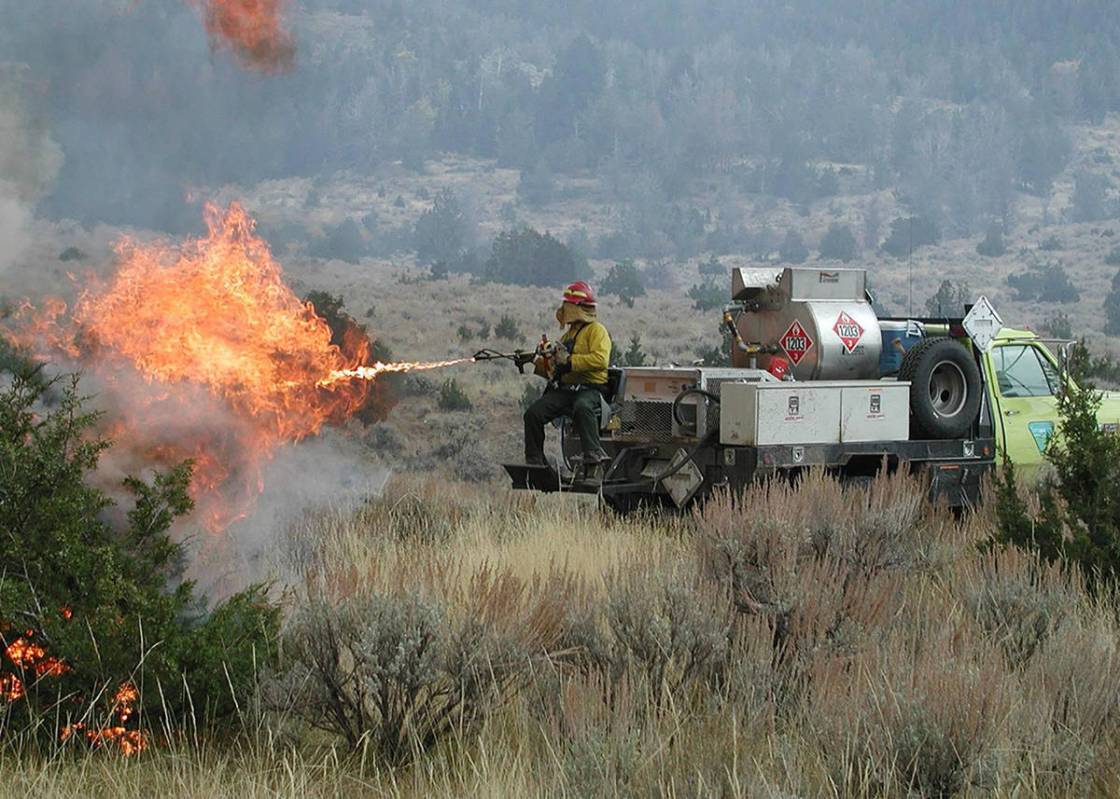
With wildland fires eating up the forests and rangelands of Nevada each summer, and fire season now upon us, University of Nevada, Reno scientists are examining how drought, climate change and land management will affect future fire activity and how fires can in turn influence plant, soil and hydrologic processes.
In 2016, a little more than 265,000 acres statewide in Nevada burned from wildfires. In 2017, roughly 1.3 million acres burned, and in 2018 a little more than a million acres burned, according to the National Interagency Fire Center in Boise, Idaho. They reported, in 2019, 562 fires burned 82,282 acres in Nevada with 318 human-caused fires burning 18,801 acres and 244 lightning fires burning 63,481 acres, according to the fire center headquartered in Boise, Idaho.
“Our college faculty have for years been at the forefront of teaching, research, and Extension regarding rangeland, woodland and forest fires,” said Bill Payne, dean of the College of Agriculture, Biotechnology and Natural Resource at UNR. “For example, the experiment station, led by Chris Pritsos, is currently funding at least five research projects on fire at the amount of $330,000, and our faculty have been very successful at attracting more than $1.25 million in extramural funding for research and Extension related to fire ecology and preparedness.”
One of the college’s longstanding outreach programs, Living With Fire, is a collaborative effort among federal, state and local firefighting agencies and resource management agencies and is managed by UNR Extension.
“There isn’t just one approach to protect wildlands and promote quicker recovery from fires, it’s definitely a multifaceted approach,” said Christina Restaino, director of the Living With Fire Program and an assistant professor at the college.
As a natural resource specialist in the college’s Extension unit, Restaino works with other entities across the state to provide education on how to prepare for and mitigate the detrimental effects of wildfire.
“It requires that we, at minimum, work together to achieve the three principles of the national cohesive strategy, which are fire-adapted communities, safe and effective response and resilient landscapes,” she said.
In Nevada, land management agencies have signed onto a shared stewardship agreement and have adopted the Nevada Cohesive Strategy as a guidepost for fire management throughout the region.
“We can’t separate humans from the landscape, so we need to be working to build resilient landscapes to fire through treatments like the BLM and (the U.S. Forest Service) are doing,” Restaino said. “We need to build capacity for firefighting response and proactive fuels treatments, and we need to have communities in the wildland urban interface become adapted to fire through good defensible space, safe places for firefighters to fight fire and evacuation preparedness.”
Their annual fire program, Nevada Wildfire Awareness Month is May, this year during a time when everyone is trying to set health boundaries through social distancing and staying at home.
“Wildfires can and will still happen this year, even though people are all locked down at home,” Restaino said.